Introduction to the Web of Things
Outline
- Sensors and Actuators
- Intelligent Systems?
- The Idea of a Web of Thing
- Representational State Transfer
- The W3C Thing Description Model
- Semantics for the Web of Things
- Affordance Selection and Planning
Sensors and Actuators
The Web of Things is the latest emergence of a long-lasting field of research.
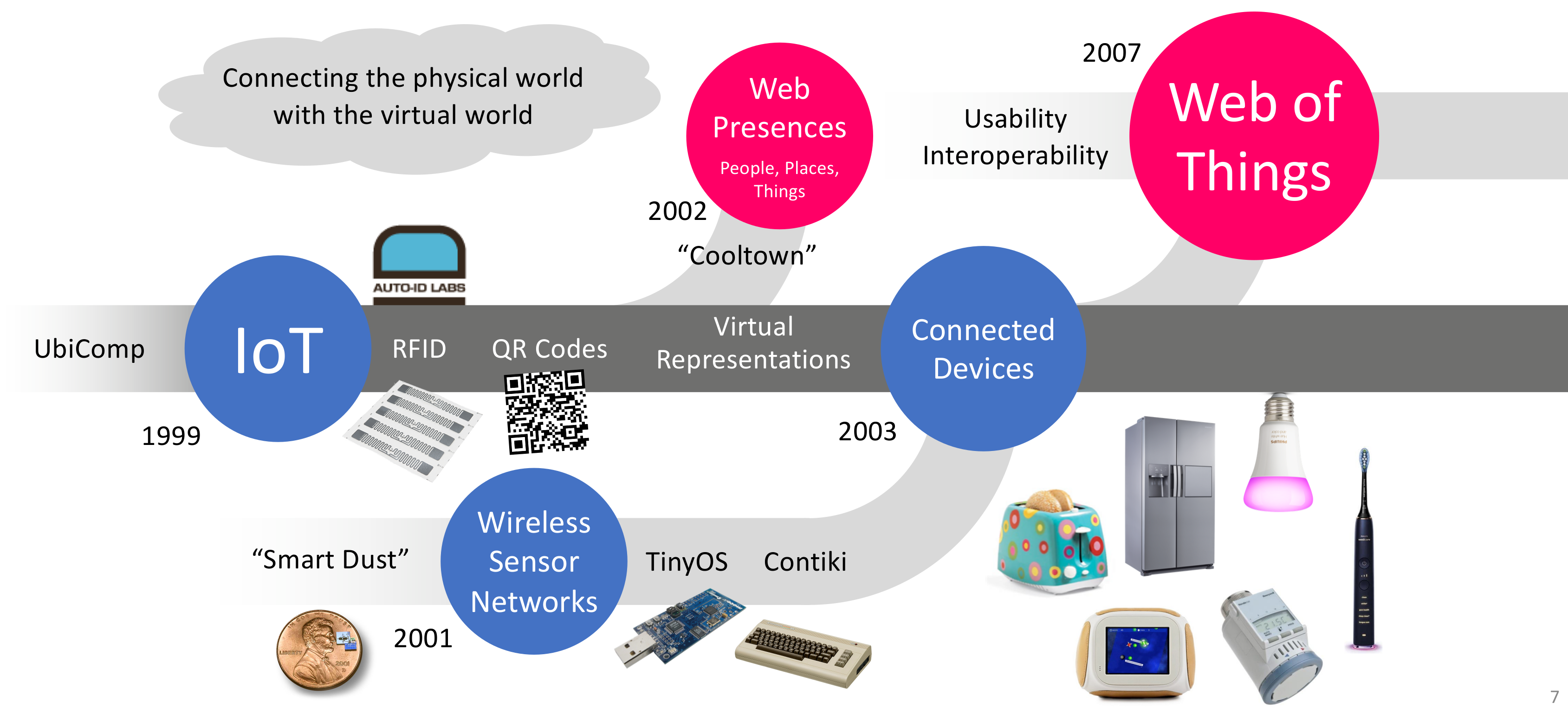
- 1948 Cybernetics
- 1993 Ubiquitous Computing
- 1998 Ambient Intelligence
- 2000 Wireless Sensor Networks
- 2000 Internet of Things
- 2001 Pervasive Computing
- 2007 Cyber-Physical Systems
- 2009 Web of Things
Cybernetics: Science related to the automatic control of systems in a broad sense, from industrial systems to living organisms.
Ubiquitous & Pervasive Computing, Ambient intelligence: Methods of computation that aim at making computing transparent to users as well as aware of the user's environment through autonomous perception.
Mobile applications using GPS traces inherit from that field of research.
Wireless Sensor Networks: Network that take advantage of the availability of cheaper and smaller computational devices.
Internet of Things: World-scale network that takes advantage of the availability of Radio-Frequency Identification (RFID) and other sensing technologies.
The term "Internet of Things", introduced by Kevin Ashton, first targeted product tracking in supply chains.
Cyber-Physical (Production) Systems: Systems of arbitrary size combining control components and physical equipment.
A CPS can be defined at the level of an entire supply chain.
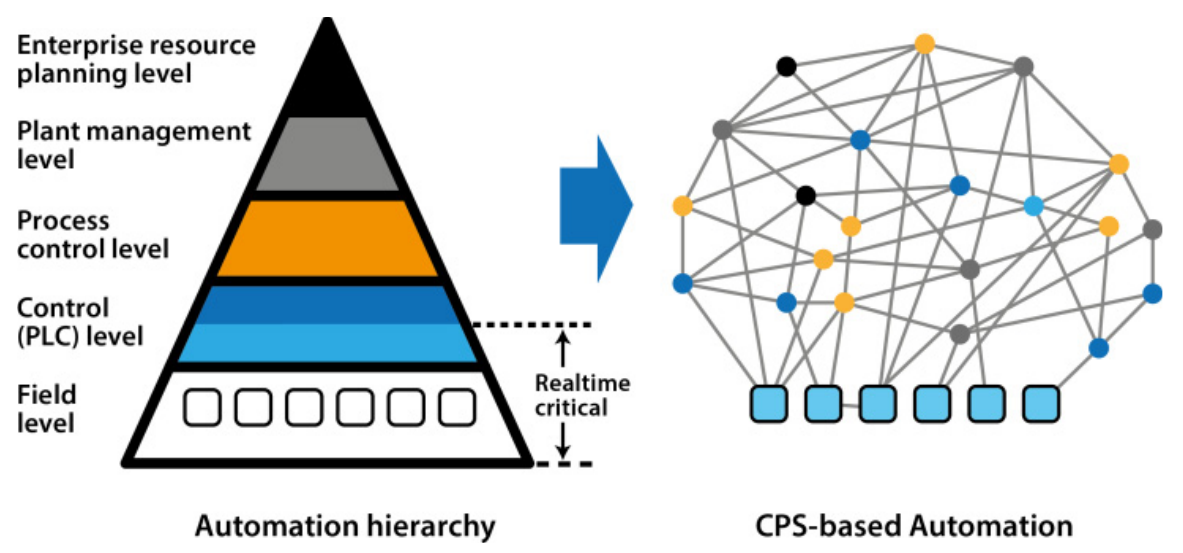
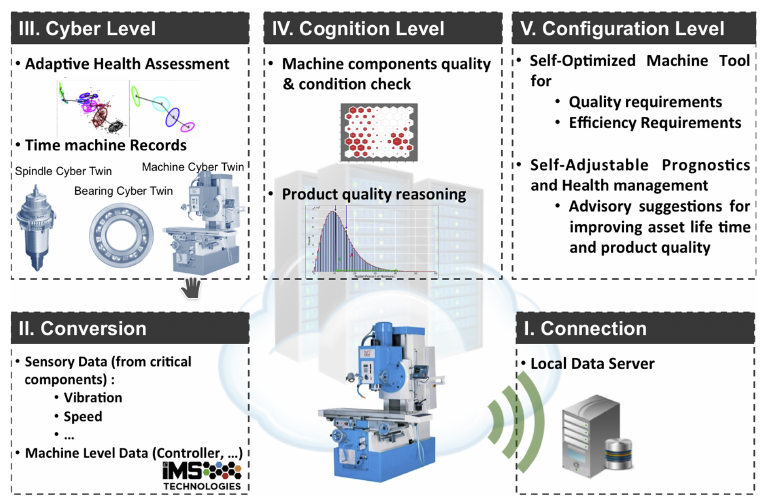
All these fields focus on part of the standard cybernetic system.

Intelligent Systems?
Classical Artificial Intelligence (AI) borrowed many ideas from cybernetics.
The Web of Things maintains the connection with AI through architectural constraints.
But first… Are you intelligent?
Prove it on the Abstraction and Reasoning Challenge (ARC): arcprize.org/play
Intelligence is the ability of a single set of Web agents to operate on a broad range of configurations of Web servers and according to a global objective.
This definition is adapted from MOSAIK (Charpenay, 2021), a framework for self-organized manufacturing systems.
In other words, intelligence is not in the system under control but in the controller.
An important pre-condition for intelligence is connectivity.
Note that homes, cities, manufacturing systems and even phones are not smart just because they are connected to the Internet.
Imagine you want to tell your conveyor to adapt its speed depending on whether plastic or metal components are on it — you need to do some image recognition on the conveyor and you need an algorithm to change the speed. Now we can use agents to fulfill all of it. — (Menzl, 2025)
For the agent to reason and act, there must already be a camera on the conveyor.
Moreover, "you" often don't know how to change speed via a digital interface. Neither does the agent.
The Idea of a Web of Things
"Every kind of thing can have its own kind of reason for being a thing." — Patrick Hayes (Hayes, 1983)
What, then, is a Thing in the Web of Things?
Any physical object coupled with a computational device or system of any size can be regarded as a Thing.
See device categories listed in the WoT architecture specification.
The Web of Things addresses the main technical problem that comes with increasing numbers of computational devices: interoperability.
A single Web client can combine heterogeneous Things to build application mashups.
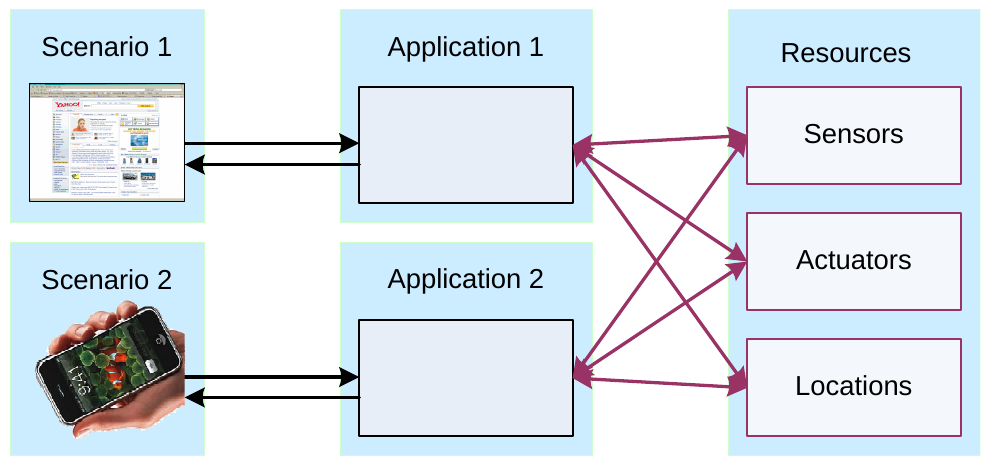
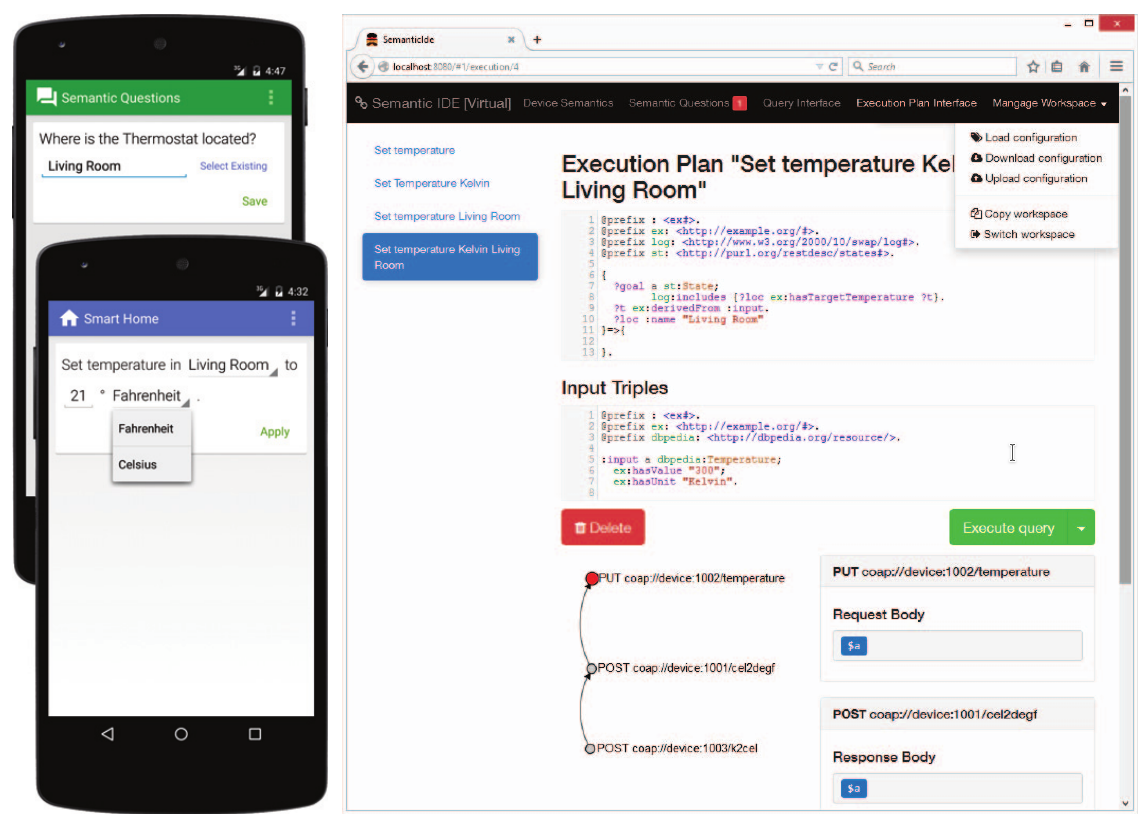
Build from source code and try it out yourself.
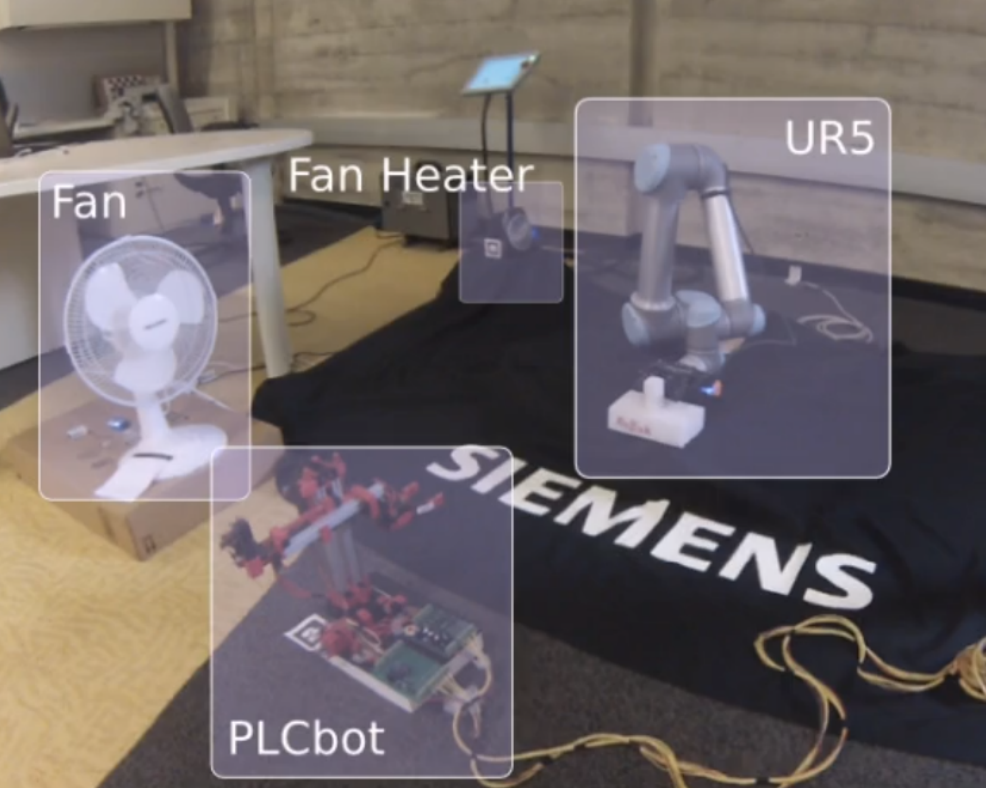
See a similar process with human-machine collaboration in action.
The Web client executes an application mashup as a series of HTTP operations.
PUT /pwr/switch HTTP/1.1
Host: device.local
ONPUT /ac/mode HTTP/1.1
Host: device.local
AUTOPUT /ac/vent HTTP/1.1
Host: device.local
12POST /fahrenheit2celsius HTTP/1.1
Host: converter.com
83PUT /ac/target HTTP/1.1
Host: device.local
25POST /pick-and-place HTTP/1.1
Host: ur5-robot.local
Content-Type: application/json
{ "from": [6, 5.4], "to": [2.4, 7] }POST /jobs HTTP/1.1
Host: fan-heater.local
Content-Type: application/json
{ "duration": 10 }POST /pick-and-place HTTP/1.1
Host: ur5-robot.local
Content-Type: application/json
{ "from": [2.4, 7], "to": [2.4, 2] }POST /move-from-to HTTP/1.1
Host: plcbot.local
Content-Type: application/json
[ [2.4, 2], [5.1, 2] ]POST /turn-on HTTP/1.1
Host: fan.local
Content-Type: text/plain
20Various organizations have their own Web APIs for Things:
- Adafruit IO REST API for DIY microcontrollers
- Amazon Web Services (AWS) API to connect IoT devices to AWS
- Asset Administration Shell (AAS) API for cyber-physical systems
Find more Web APIs for the IoT in one of the OpenAPI catalogs.
A minimal Web Thing API was proposed in 2015, to update a Thing's properties, invoke its actions and subscribe to its notifications.
| HTTP Method | Resource |
|---|---|
| GET | {wt} |
| GET | {wt}/model |
| GET | {wt}/properties |
| GET, PUT | {wt}/properties/{id} |
| GET | {wt}/actions |
| GET, POST | {wt}/actions/{id} |
| GET, PUT, DELETE | {wt}/actions/{id}/{actionId} |
| GET, POST | {wt}/subscriptions |
What operations of the Web Thing API are also available in previously defined APIs?
Defining a Web interface to Things does not solve all interoperability problems between Things and clients, though.
-
Can some Thing of any size interoperate with any other device?
Embedded Web -
Can clients execute mashups without prior knowledge of the Things?
Semantic Web of Things (SWoT)
Representational State Transfer
Representational State Transfer (REST) is a set of architectural constraints for "network-based software" (Fielding, 2000).
- client-server architecture
- stateless communication
- cache
- uniform interface
- layered system
- (code-on-demand)
The REST constraints have conditioned much of HTTP/1.1, including:
- Cookies and session tokens
- Cache control
- Content negotiation
- Proxies and reverse proxies
The uniform interface constraint is specific to REST (and the Web).
What are the main pillars of the architecture of the Web?
- Identification with URIs
- Interaction with HTTP
- Data Formats incl. hypermedia controls
These are the main sections of the 2004 reference specification: Architecture of the World Wide Web.
These pillars translate into 4 sub-constraints in REST:
- identification of resources
- manipulation of resources through representations
- self-descriptive messages
- hypermedia as the engine of application state (HATEOAS)
Linked Data interfaces are RESTful by construction.
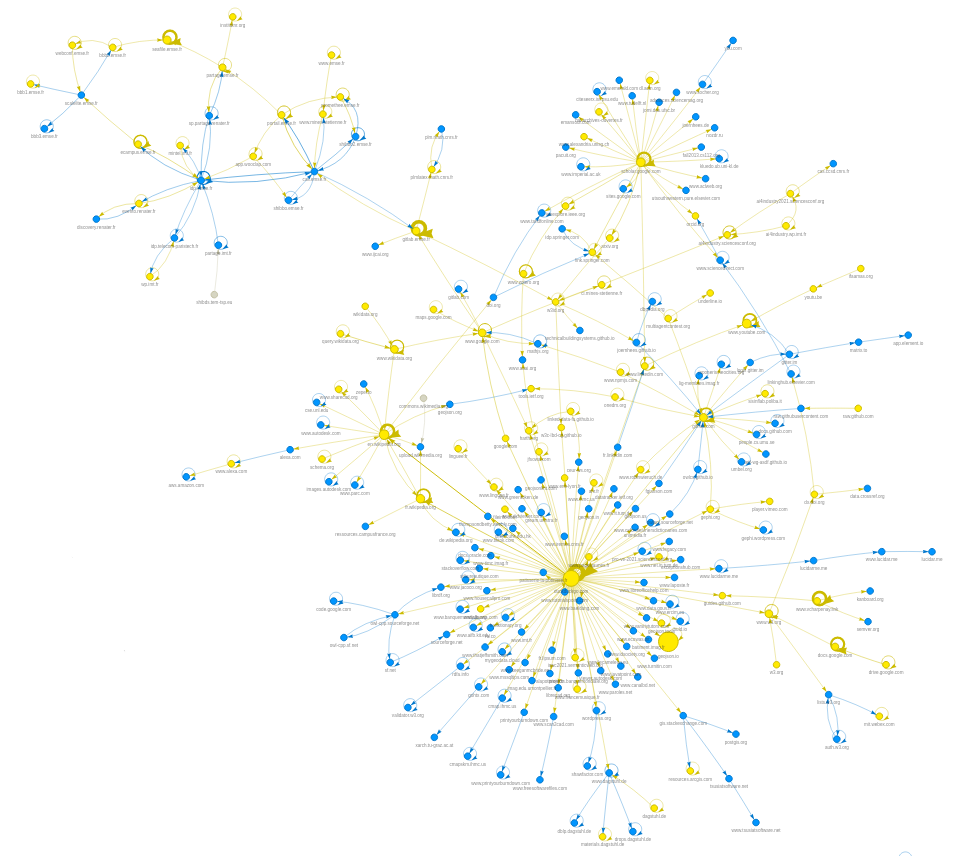
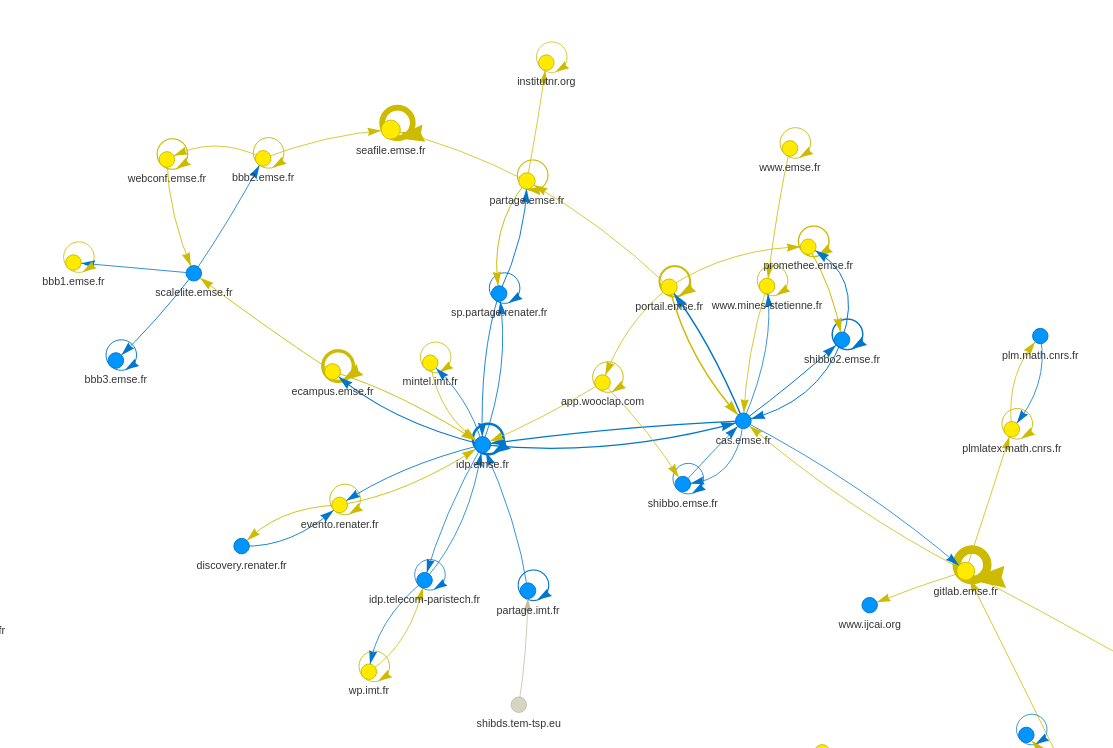
You can render your own navigation graph with the Web Navigation Window browser extension (available for Chrome and for Firefox).
- Remote procedure calls are e.g. not stateless.
- Publish-subscribe has no mechanism for resource manipulation (in the general case).
Try to design a non-RESTful architecture for the production line mash-up (last section).
Web clients can do hypermedia navigation by following links and submitting forms.
Web clients can discover properties exposed by Thing as links.
Web clients can discover actions exposed by Things as forms.
GET / HTTP/1.1
Host: device.localHTTP/1.1 200 OK
Content-Type: application/json
[{ "@type": "Link", "href": "http://device.local/pwr", "rel": "ssn:hasSubSystem" },
{ "@type": "Link", "href": "http://device.local/ac", "rel": "ssn:hasSubSystem" }]GET /pwr HTTP/1.1
Host: device.localHTTP/1.1 200 OK
Content-Type: application/json
[{ "@type": "Link", "href": "http://device.local/pwr/switch", "rel": "ssn:hasProperty" }]GET /ac HTTP/1.1
Host: device.localHTTP/1.1 200 OK
Content-Type: application/json
[{ "@type": "Link", "href": "http://device.local/ac/mode", "rel": "ssn:hasProperty" },
{ "@type": "Link", "href": "http://device.local/ac/vent", "rel": "ssn:hasProperty" },
{ "@type": "Link", "href": "http://device.local/ac/target", "rel": "ssn:hasProperty" }]GET / HTTP/1.1
Host: ur5-robot.localHTTP/1.1 200 OK
Content-Type: application/json
[{ "@type": "Form", "href": "http://ur5-robot.local/pick-and-place", "op": "td:invokeAction" }]POST /pick-and-place HTTP/1.1
Host: ur5-robot.local
Content-Type: application/json
{ "from": [6, 5.4], "to": [2.4, 7] }HTTP/1.1 201 Created
Location: http://ur5-robot.local/pick-and-place/invocation1
[no content]The dominant protocol on the IoT is MQTT. Could REST principles be applied to MQTT?
What would be needed for MQTT to become RESTful is:
-
a URI scheme
(an unofficial scheme exists) -
request-response interactions
(available in MQTT v5) -
a hypermedia data format
(say, RDF)
REST over MQTT would allow for large-scale asynchronous communication between clients and servers.
An extension to REST integrates further asynchronous operations to REST: A+REST.
In REST over MQTT, clients can only receive a single response after a request on some resource.
In A+REST, clients can watch the resource, receiving arbitrarily many notifications that the resource representation has changed.
A+REST was first described in (Khare, 2004).
CoAP, the Constrained Application Protocol embraces the A+REST architectural style, with the OBSERVE flag on GET operations.
The Hypermedea agent framework also follows the principles of A+REST.
The W3C Thing Description Model
The World Wide Web Consortium (W3C) has initiated a standardization effort to facilitate automated mashups based on semantic descriptions of Things.
What do existing standards such as OpenAPI lack to describe WoT Things?
A translation from W3C WoT Thing Descriptions to OpenAPI and AsyncAPI exists.
But there is no standard that captures both synchronous and asynchronous operations, as in A+REST.
See playground.thingweb.io for examples with OpenAPI and AsyncAPI.
REST is (theoretically) independent of the communication protocol.
A WoT standard should target as many IoT and industrial protocols as possible.
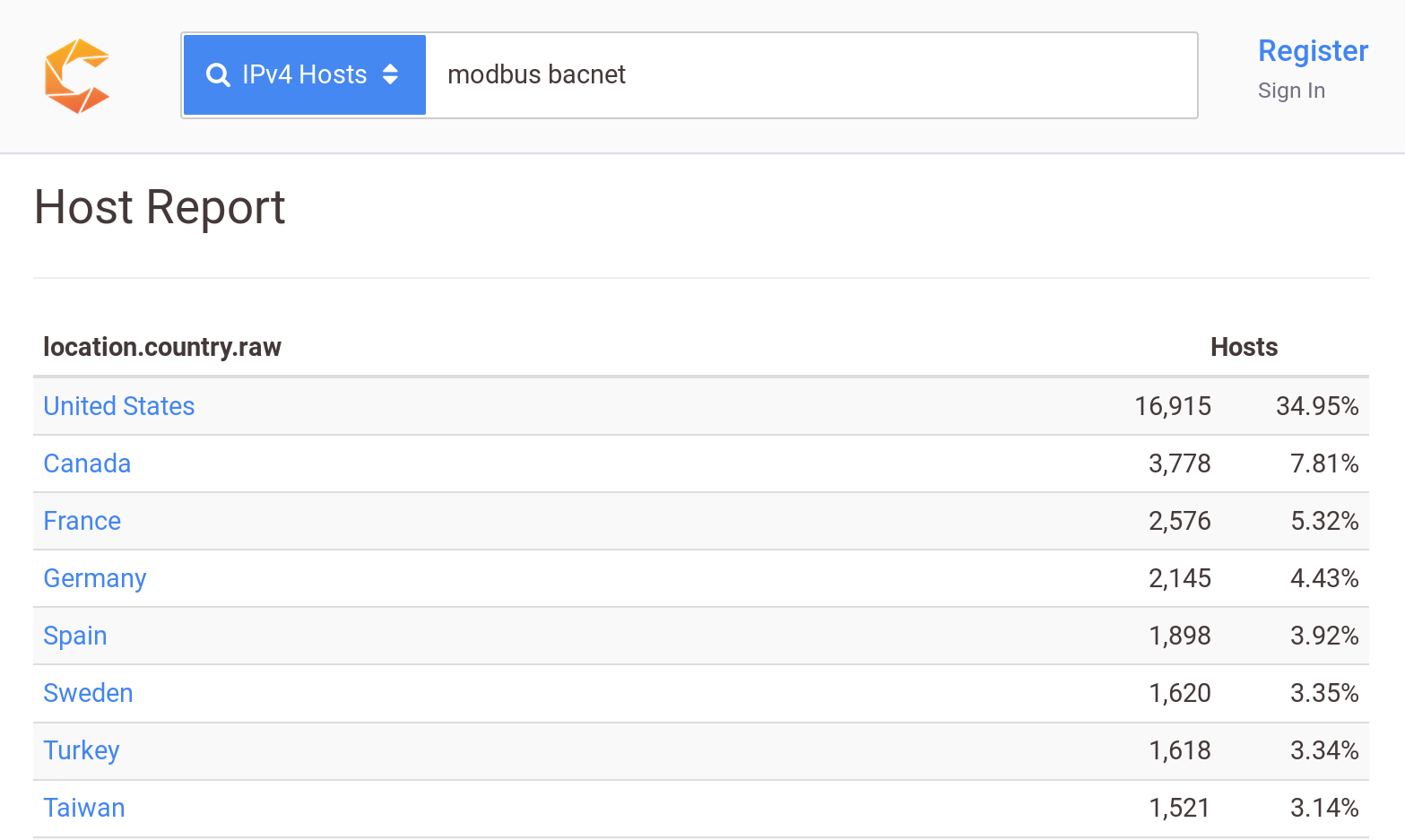
Two more examples:
- The IT'm factory in Saint-Étienne has a (TCP) OPC-UA interface only.
- The Espace Fauriel building in Saint-Étienne has an automation system (from 1991) with a KNX interface only.
The W3C Web of Things working group has thus decided to:
- capture abstract REST principles in the Thing Description model
- provide a mechanism for providing various protocol bindings
Semantics for the Web of Things
The Open Geospatial Consortium (OGC) first used the Web to publish sensor measurements in a unified manner.
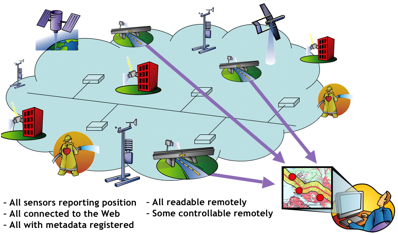
The OGC Simple Observation Service (SOS) offers sensor observations and measurements in a standard XML format (O&M).
<om:OM_Observation gml:id="obsTest1">
<om:phenomemonTime>
<gml:TimeInstant>
<gml:timePosition>2010-03-08T16:22:25.00</gml:timePosition>
</gml:TimeInstant>
</om:phenomemonTime>
<om:observedProperty xlink:href="http://sweet.jpl.nasa.gov/2.0/hydroSurface.owl#WaterHeight"/>
<om:result uom="cm">28</om:result>
</om:OM_Observation>
SOS, O&M and other OGC standards are collectively referred to as the Sensor Web Enablement (SWE) framework.
SWE then combined with Semantic Web technologies has become the Semantic Sensor Web.
The Semantic Sensor Web has led to the standardization of the Semantic Sensor Network (SSN) ontology.
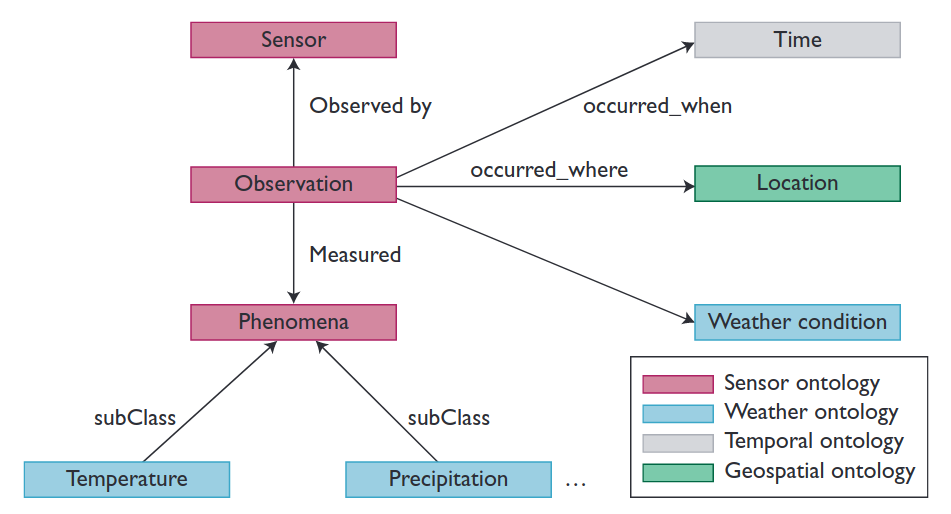
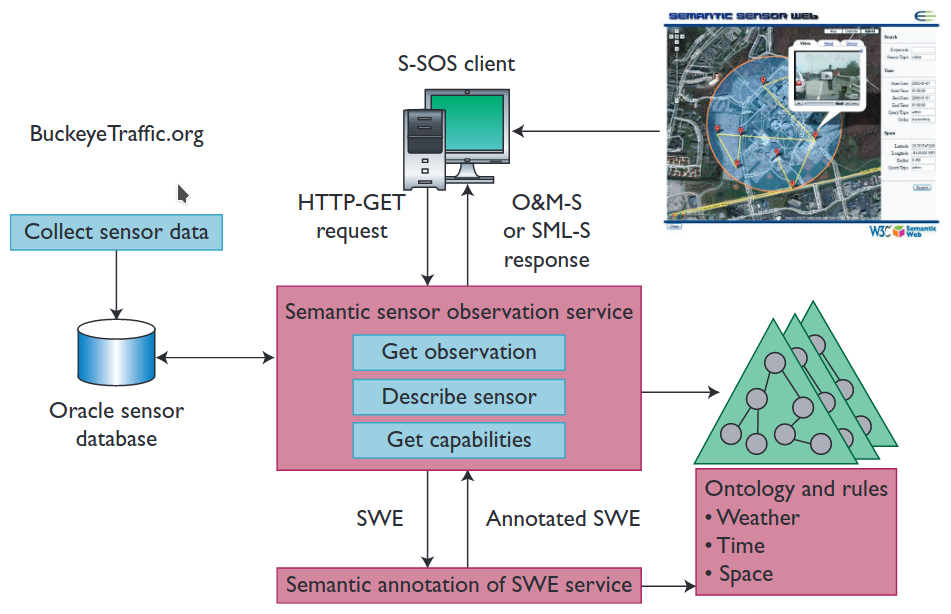
On the Semantic Sensor Web, inference rules are used to enrich sensor observations may.
Such inference rules may be relatively simple.
Observation(?obs) &
described(?obs, ?weather) &
FreezingCondition(?weather) &
HighWindCondition(?weather) &
SnowCondition(?weather) &
=> BlizzardCondition(?weather)
Key is not the complexity of inference but the completeness of the knowledge.
Hence, the idea of ubiquitous computing.
Now, what about
an "Actuator Web Enablement"?
Now, what about
a "Thing Web Enablement"?
There is no standard Web model to specify the effects of an actuation.
It is however possible to provide semantics to Things by publishing Thing Models to online repositories.
See the WoT catalogue for a list of model repositories.